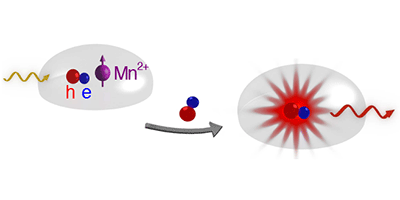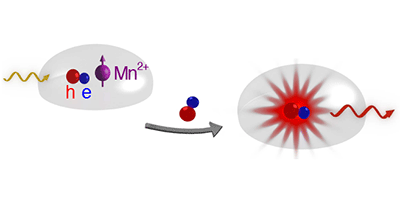Observing the Precession of a Single Spin-5/2 Ion
Large-spin magnetic particles, both ions and molecules, embedded in solids, could perform more complex functions in quantum information storage and processing than spin-1/2 or spin-3/2 particles, but they are harder to observe in isolation. Now Mateusz Goryca of the University of Warsaw, Poland, and his colleagues have observed the coherent precession in a magnetic field of a single spin-5/2 particle—a ion in a quantum dot.
The team studied a blob of CdTe, called a quantum dot, tens of nanometers in diameter, containing a single ion. To probe the ion’s spin, they used two identical laser pulses separated by a variable delay to create two excitons—short-lived, electron-hole pairs—that interacted with the ion. The photon frequency was chosen to excite the excitons to the lowest energy level of the exciton-ion complex. The first exciton started the ion precessing in the external magnetic field before decaying. For the second pulse, the team measured the probability that an exciton could be created by counting the fraction of times that the pulse resulted in photon emission from an exciton decay. This probability indicated the ion’s time-dependent probability of occupying the lowest energy level.
The team found that the occupation of the ion’s lowest energy state oscillated with time as expected for precession of a single, coherent spin. According to the authors, the results show that the quantum state of the ion can be “read” in detail, which is the first step in demonstrating it as a multi-quantum-bit object. Now the team is working on manipulating the ion’s spin state, equivalent to “writing” quantum bits.
This research is published in Physical Review Letters.
–David Ehrenstein





